Saint of the Day – 9 June – Saint Columba of Iona (521-597) Apostle of the Picts, Apostle to Scotland, Abbot, Missionary, Evangelist, Poet, Scholar and Writer – born on 7 December 521 at Garton, County Donegal, Ireland and died on 9 June 597 at Iona, Scotland and buried there. Patronages – Derry, against floods, bookbinders, poets, co-patron of Ireland and of Scotland. St Columba is also known as Coim, Colmcille, Colum, Columbkill, Columbkille, Columbus, Columcille, Columkill, Combs. Additional Memorials – 6 January as one of the Twelve Apostles of Ireland, 17 June translation of relics.
His parents named him Crimtham (Pronounced Criffan) meaning “a fox.” This was not an unusual name at the time, as it signifies the type of attributes that a Celtic noble would need throughout his life – those of cunning and stealth. Later on Columba showed such gentleness, sweetness of nature and a desire for things sacred, that those around him called him Colm which means “a dove” and sometimes Colmcille, meaning “dove of the church.” The latter is the name most often given the saint in his native Ireland. More than likely St Columba would have been High King of Ireland had he not devoted his life to the best cause of all – proclaiming the message of Jesus Christ. 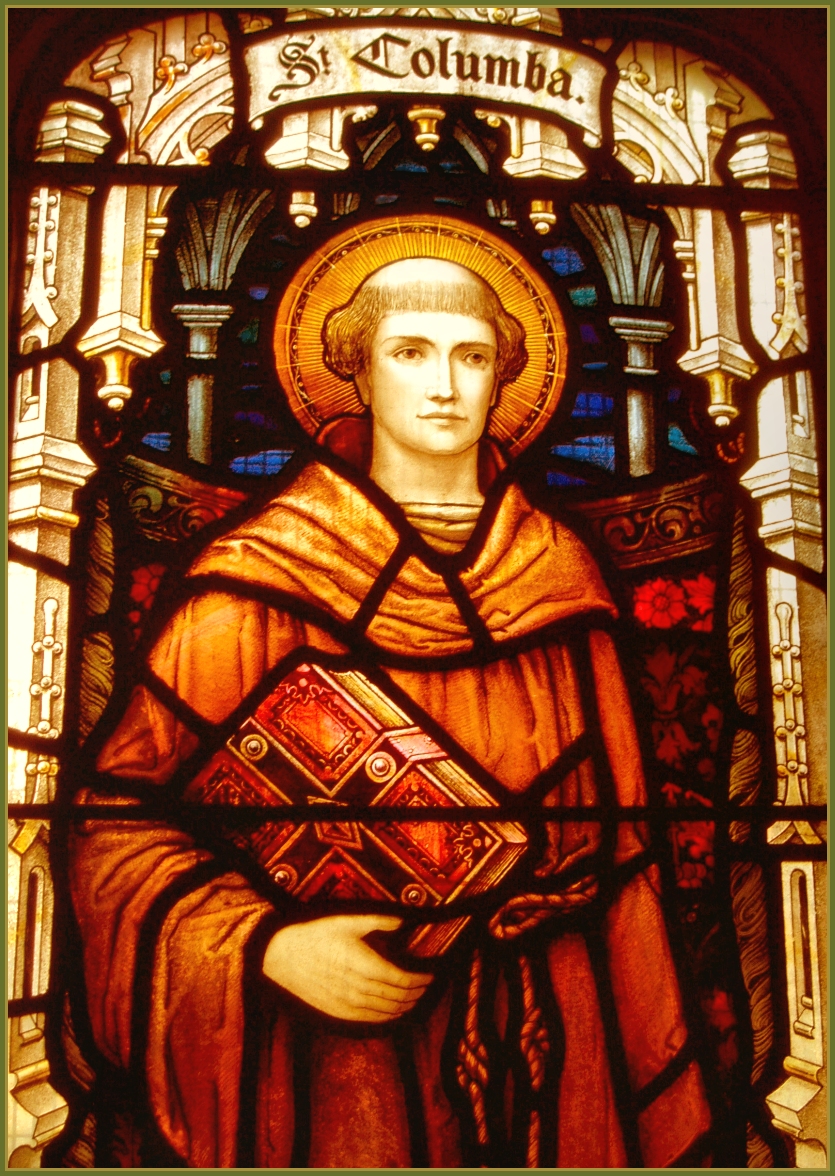
He should not be confused with St Columban/us (543-615) – see here: https://anastpaul.com/2018/11/23/saint-of-the-day-23-november-st-columban-543-615/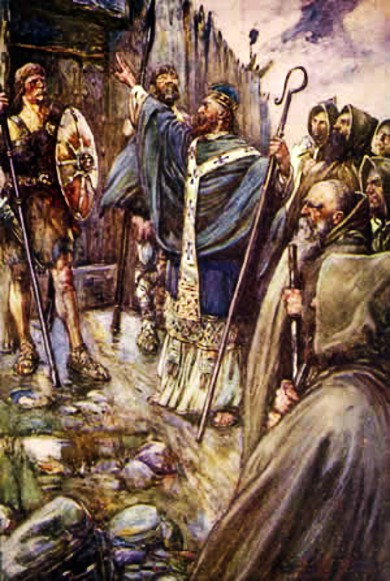
The son of a tribal chieftain, Columba was given the name Crimthann when he was Baptised shortly after his birth in Gartan, County Donegal. When he was a boy, he was so often found praying in the town church that his friends called him Colm Cille (Dove of the Church) and it was as Colm, or its Latin form Columba, that he was known for the rest of his life.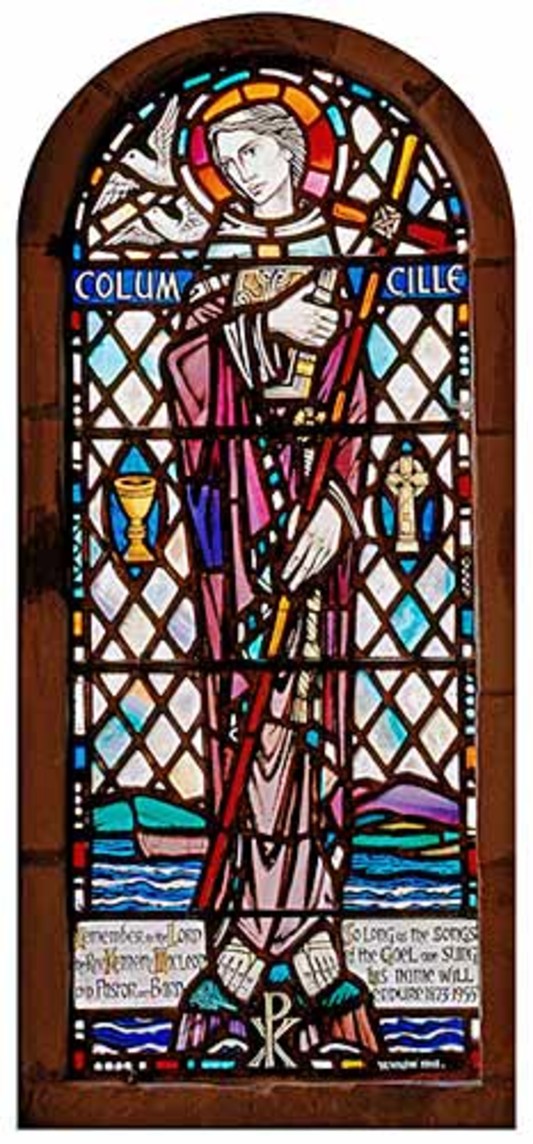
In his early 20s, Columba was strongly influenced by one of his teachers, St Finian of Clonard, and asked to be Ordained a Priest. When a prince cousin gave him some land at Derry, he decided to start a Monastery. Because of his love of nature Columba refused to build the Church facing east, as was the custom, he wanted to spare the lives of as many oak trees as he could. His foundation of another Monastery at Durrow 7 years later, was the beginning of an extraordinary decade during which he travelled through northern Ireland teaching about Christianity and inspiring many people by his personal holiness. He founded some 30 Monasteries in those 10 years.
Columba’s strong personality and forceful preaching aroused considerable antagonism. He was accused in 563 of starting a war between two Irish tribes and was sentenced by the high king never to see Ireland again, to spend the rest of his life in exile. This battle it is believed, resulted over what is today seen, as the first Copyright dispute in history – Columba had become involved in a quarrel with Finnian of Moville of Movilla Abbey over a psalter. Columba copied the manuscript at the Scriptorium under Finnian, intending to keep the copy. Finnian disputed his right to keep it.
With 12 companions he sailed from the shores he loved and settled on a bleak island called Iona off the coast of Scotland. The monks made occasional visits to the Scottish mainland, where they preached Christianity. Soon their community had 150 members.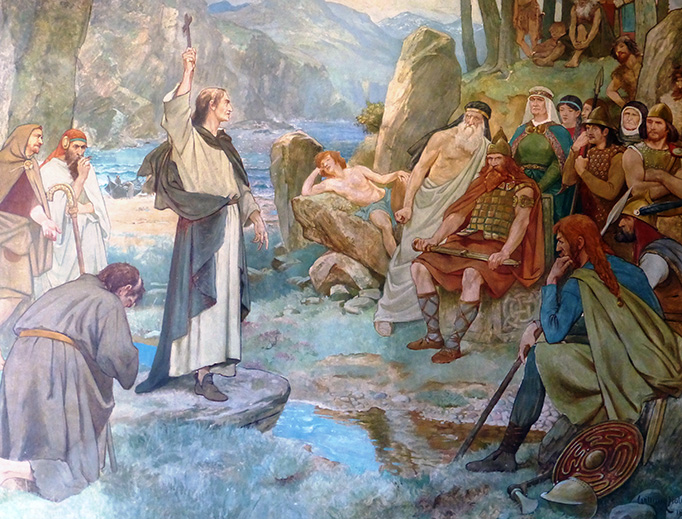
In 575, Columba was persuaded to visit Ireland to mediate a dispute between the high king and the league of poets. Insisting on remaining faithful to the terms of his exile, that he never see Ireland again, he travelled blindfolded. Although his sympathies were with the poets, his reputation was respected by everyone. He spoke to the assembled nobles and clergy with such force and authority that the king was persuaded to reverse his original decree and the hostility between the two parties was calmed.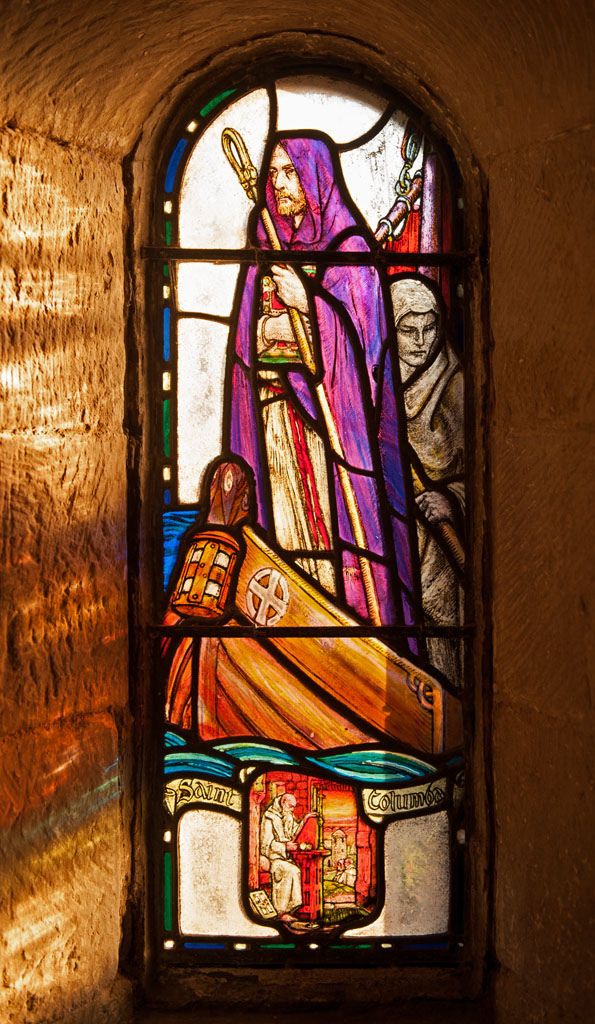
Columba spent the rest of his life on Iona, praying, fasting and teaching his monks to read and copy the Scriptures. He provided inspiration for their Missionary efforts and was influential, in the politics of Scotland. Long before his death in 597 he was regarded as a saint by his fellow monks and is today a beloved figure in Irish tradition.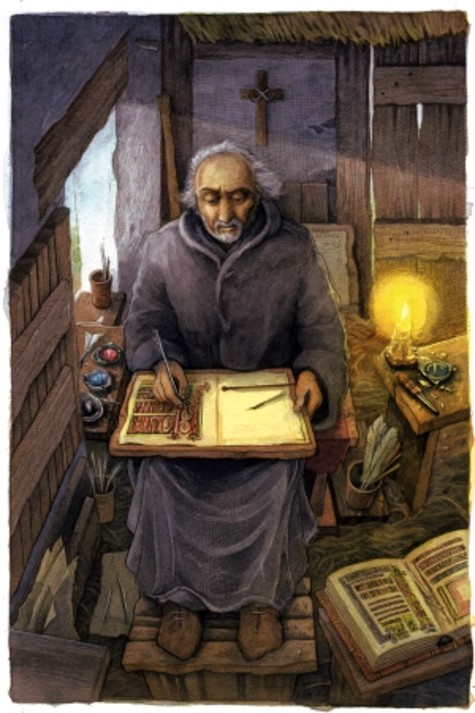
Columba died on Iona and was buried in 597 by his monks in the Abbey he created. His relics were removed in 849 and divided between Scotland and Ireland. The parts of the relics which went to Ireland are reputed to be buried in Downpatrick, County Down, with Saint Patrick and Brigid of Kildare and at Saul Church neighbouring Downpatrick.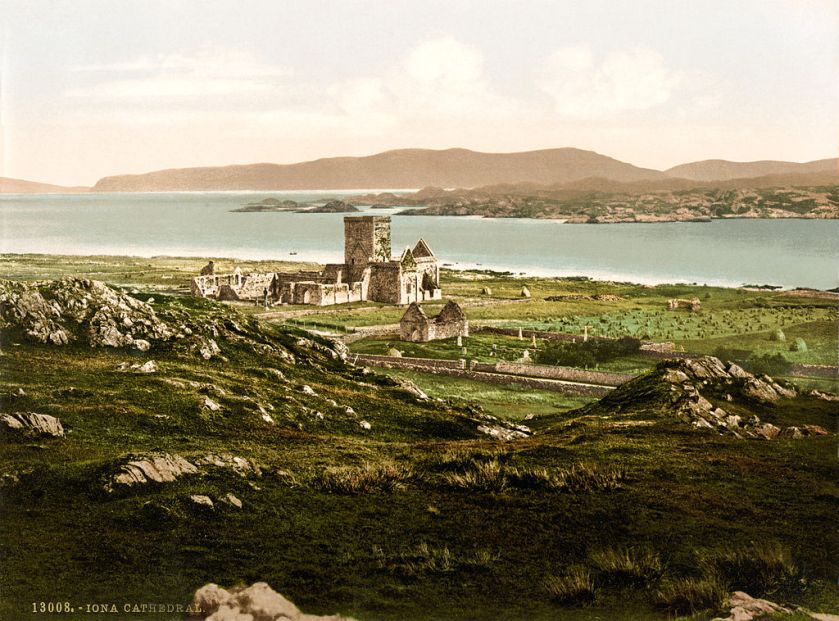

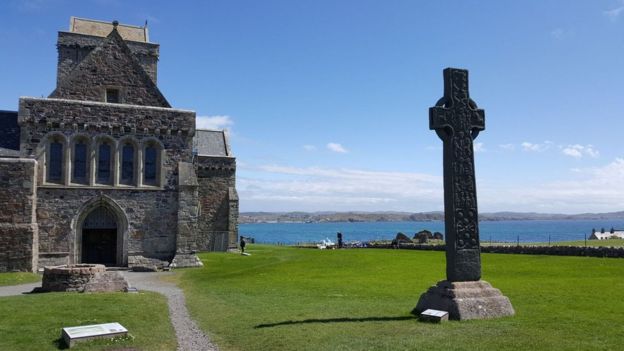
After his death Iona became a place of pilgrimage for kings and commoners. 60,000 of the latter still visit the rebuilt abbey every year. But did Columba leave any physical trace? His successor Adomnán, writing 100 years after the saint’s death, described him working in his cell on a rocky hillock. That knoll is called Tòrr an Aba – “the mound of the Abbot.” In 1957 the site was excavated by a team led by the Cornish historian and archaeologist Charles Thomas. On Tòrr an Aba the diggers found hazel charcoal, apparently the remains of a wattle hut. The site had been deliberately covered with beach pebbles and there was a hole where a post – possibly a cross – had been placed. Were these the remains of Columba’s cell? Charles Thomas thought so. Only 60 years later were carbon tests capable of being done and they have confirmed that this must’ve been St Columba’s cell.
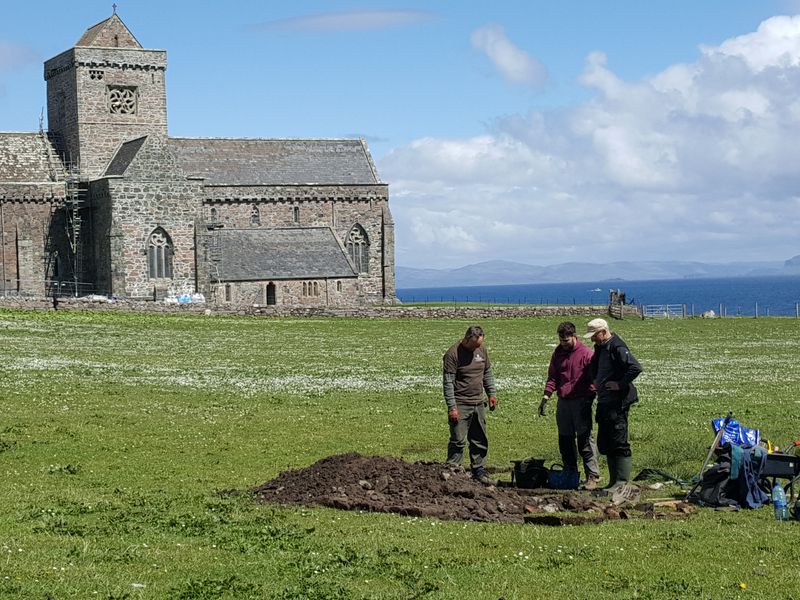
Dr Campbell who did the testing said: “This being St Columba, who is so important as a spiritual figure and as a person who founded this series of Monasteries which cultivated learning which spread throughout Europe, it’s really important. It’s really exciting to be able to touch some of the things that were associated with him.” Sixty years on, some of Prof Thomas’s fellow diggers on Iona are still alive. They were as sure as they could be, that this was the saint’s Scriptorium but lacked the backing of modern radiocarbon dating. Sadly Charles Thomas did not live to see his work vindicated. He died in 2016 a year before the definitive date of his samples could be established.
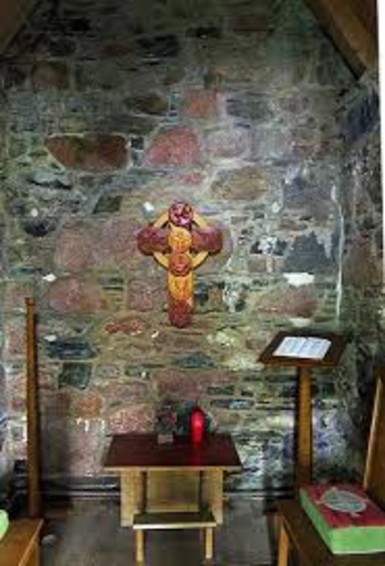
There is a lovely story, whereby St Columba prophesied his own death. It was the Sabbath and he told his fellow monks that his Sabbath was come, his time of departure, to the Lord.
As St Columba sat down, to rest his weary, aching body, the Monastery’s work horse approached him. It lay its head upon the saint’s shoulder, as though to console him and to wish him farewell. They remained there together for a short while.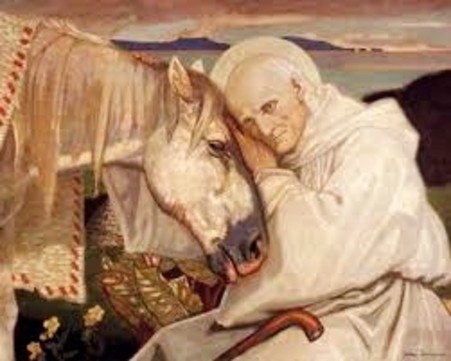
Seventy-five years of prayer, mortification and fasting were almost at an end. The north of Scotland was converted. Monks, trained by St Columba had travelled southwards, setting up Monasteries and converting the northern English. Iona was becoming the great place of pilgrimage it has remained for centuries, to his day.
He made his way to the chapel, blessed his fellow monks and took his leave, expiring right there at the foot of the altar.
And I think it is extremely fitting at this time, to petition this great saint of Ireland to prayers of intercession, for the rekindling of the Faith in this land.![]()
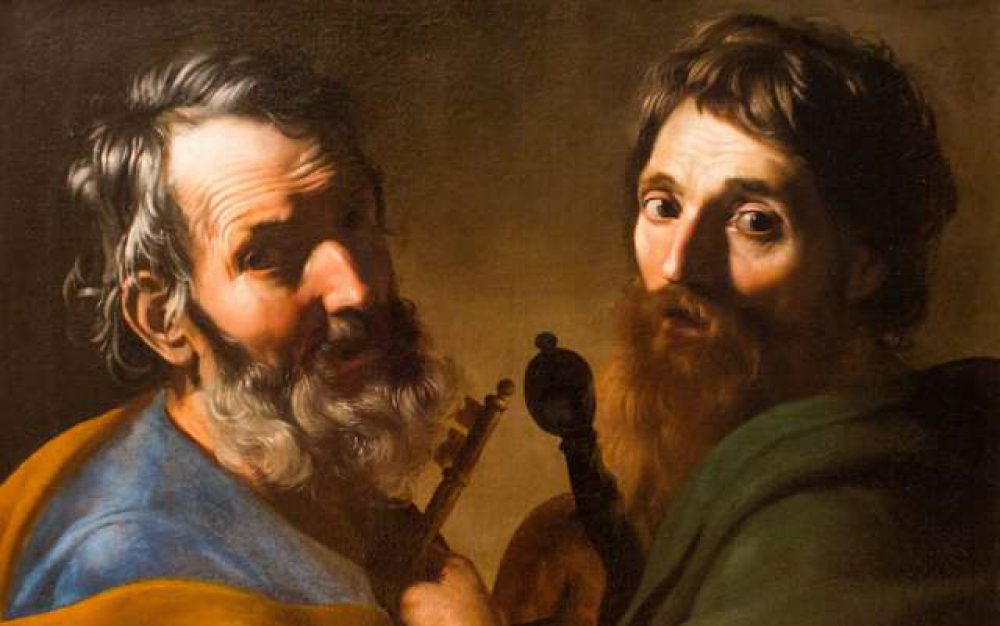
So much of this 6th century Saint has been passed along to us is amazing by itself, He is certainly a servant of God.
LikeLike
These old Irish Saints (and some in our times) were magnificent and so memorable missionaries.
LikeLike